Have you ever seen a drip from your ceiling and wondered, “What should I do if my roof is leaking?” It’s a common problem that can cause big damage if not fixed quickly. Knowing what to do can save you a lot of money and prevent water damage. Check out these emergency roof repair tips and solutions to act fast, protect your home, and stop further damage.
Key Takeaways
- Immediate action is crucial to prevent extensive water damage.
- Move belongings away from the leak to protect them from water damage.
- Use containers to capture escaping water and minimize property harm.
- Puncture swollen ceilings to release trapped water safely.
- Document all damages thoroughly for insurance claims.
- Consider emergency roof repair services from reliable firms like Core Roofing.
- Regular roof maintenance can help prevent future leaks.
Immediate Steps to Take When Your Roof is Leaking
When you find a roof leak, act fast to control the damage. First, move valuable items and important things to a dry spot. If big furniture or items can’t move, cover them with plastic sheets or tarps for protection.
To stop the leak, put buckets or containers under the dripping water. This helps catch the water and protects the floor. Also, place towels or absorbent materials around to soak up any spills. If water builds up and makes the ceiling bulge, carefully punch a hole to let the water out. This prevents bigger problems.
How to Identify the Source of the Leak
Finding roof leaks is key to stopping damage early. Start by looking for signs like musty smells from mold and water stains on ceilings. These are clues that you have a leak.
Look at flashing that’s failing, gutters clogged with debris, or shingles damaged by weather. These can all let water in.
To pinpoint where the leak is, follow these steps:
- Wet sections of the roof with a garden hose and see where water goes in.
- Check the attic for water marks, dampness, or mold. These signs often show where the leak is.
By focusing on these signs during your inspection, you can find and fix leaks before they cause more damage.
Simple Temporary Fixes
When you face an unexpected roof leak, a temporary fix can save the day until experts arrive. Here are some easy DIY solutions to consider:
- Reapply Caulking: Check for gaps around chimneys or windows. Use fresh caulking to seal them. This quick fix helps stop water from getting in.
- Replace Damaged Vent Boots: If vent boots are damaged, you can replace or temporarily fix them with screws and rubber washers. This stops water from leaking into your home.
- Patching Small Cracks: For small cracks in chimneys or vents, use caulk or tar. These materials are easy to find and can seal the area quickly.
Another good idea is tarp application. Putting a tarp over the leak can protect your roof from more rain damage. Make sure the tarp is tied down well so it doesn’t fly away in the wind.
These temporary fixes and DIY solutions aren’t permanent, but they can greatly reduce damage. They give you time to wait for a professional to do a full repair.
Why It’s Important to Document the Damage
It’s key to document roof damage when filing insurance claims. This evidence is crucial for the claim’s success.
Homeowners must carefully document leaks and water damage. This makes sure all problems are clear and easy to understand. Here’s how:
- Take clear, high-resolution photos of the roof damage from different angles.
- Record the progression of water damage inside your home, including any affected items.
- Keep detailed records of water damage to show how severe the issue is.
Good documentation strengthens your insurance claim. It can also speed up the approval process. This means you might get coverage for repairs and replacements to fix your home. By gathering solid roof damage evidence, homeowners can make a strong case to insurance companies. This ensures all damage is covered. Proper documentation is key to getting the right financial support for fixing roof leaks.
When to Call a Professional Roofing Company
Temporary fixes can help, but some roof repairs need a pro’s touch. Knowing when to call for professional roofers is key.
Here are signs it’s time to call a roof repair service:
- Significant water damage or many leaks that threaten your home’s structure.
- Roofing material showing major wear, like cracked shingles or damaged flashing.
- Needs for emergency roofing assistance, like big storm damage or sudden leaks that could worsen.
Getting a pro to check things out early can stop bigger problems, keep you safe, and make sure repairs last. Professional roofers have the right tools and know-how for all roofing issues. This gives homeowners peace of mind.
Regular Roof Maintenance Tips
Keeping your roof in good shape is key to avoiding leaks and making it last longer. Doing regular roof checks and taking *preventative measures* can save you from expensive repairs later. Here are some easy tips for keeping your roof in top shape:
- Trim Overhanging Tree Limbs: Trees that hang over your roof can damage shingles and cause leaks. Cutting back these branches helps protect your roof.
- Clear Gutters and Downspouts: If your gutters are clogged, water can build up and seep into your roof. Make sure to keep them clean for good water flow.
- Conduct Post-Storm Inspections: After a big storm, check your roof for any shingles that are damaged. Fixing these problems early can stop bigger issues later.
- Check Roof Penetration Points: Places where things stick out like chimneys or vents can be more likely to leak. Checking these spots often can catch and fix problems early.
By following these tips and making *shingle maintenance* a regular part of your routine, you can lower the chance of leaks and make your roof last longer.
Conclusion
When you find a roof leak, acting fast is key to protect your home from water damage. Start by finding where the leak is and fix it temporarily. This helps stop more damage right away. It’s also important to document the damage for insurance and future fixes.
Getting professional roof maintenance at the right time can save you from big repairs later. Roofers can fix immediate problems and give you advice on your roof’s condition. This helps you plan for the future and keep your roof in good shape.
Regular roof maintenance keeps your home safe all year. By taking good care of your roof and watching for problems, you keep your home safe from the weather. Taking care of your roof means more than just fixing leaks. It means keeping your home strong and valuable.







